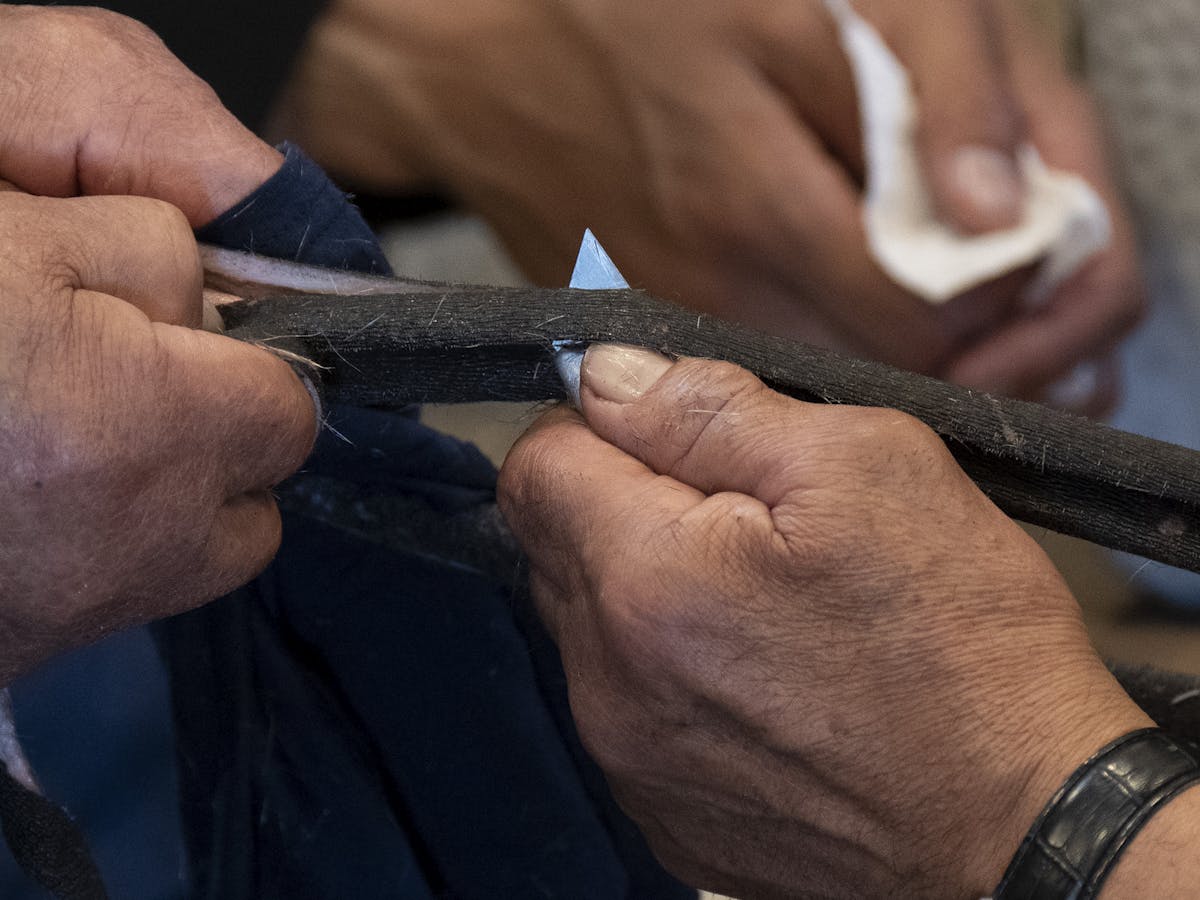Men participate in a demonstration of rope making for dog teams, May 12, 2022, in Inukjuak, Que. The Canadian Press/Adrian Wyld
by Dr. Manoj Kumar Mishra 28 May 2023
Quest for Ultimate Truth Bridges the Gap between Modern Scientific and Traditional Knowledge systems
Dr. Manoj Kumar Mishra, Lecturer in Political Science, SVM Autonomous College, Jagatsinghpur
Many scholars provide robust arguments and reasons as to why the Community of Science inspired by the Modern West has had epistemic and communicative disconnection from the traditional Hindu knowledge systems.
The need to refer to the traditional knowledge systems instead of a single system arises out of the fact that no knowledge system is either hermetically sealed or monolithic in nature.
In the Indian context, the Hindu knowledge systems sustained and those of Buddhists and Jains were relegated to the background as the predominance of Hindus prevailed. However, assimilation, integration and synthesis between these knowledge systems also occurred.
The reasons of failure among Indian scholars in developing common norms and reference points enabling comparison, compatibilities, corroboration and co-existence between Modern Science and Traditional Knowledge systems in India since the pre-colonial era to recent times are many. Methods of assessing the two knowledge systems ran parallel and confusions abounded as well regarding the ways and means to accommodate the traditional knowledge systems into the modern Schooling and University systems in the post-Independence era.
Linguistic and conceptual barriers not only played a significant role in this, diversified issues and shifting focus among the Indians following independence and lackadaisical attitude among Hindu scholars to systematically integrate Modern Science with Traditional Knowledge systems contributed to a feeble ‘Philosophy of Science’ that failed to develop common norms of comparison and norms of reference to a large extent.
Although assimilation, integration and synthesis have taken place between the two knowledge systems in different phases of history, these have not been adequately conceptualized and theorized impinging on the development of norms of comparison.
The significance of ‘Philosophy of Science’ is further marginalized by the fact that Modern Science is attaining most of the objectives of knowledge ranging from attaining Truth to Human freedom without supply of any substantive inputs from the traditional knowledge systems. This relegates the importance of traditional knowledge systems to the background. However, the emerging doubts that ‘Philosophy of Science’ may reach its doomsday due to its inability to integrate and synthesize the modern and traditional knowledge systems are overblown. For instance, Richard Rorty – a postmodernist thinker argues: ‘Philosophy today can no longer be accepted as competent enough to compete with science so far it is a question of giving better answers about the nature of free will, truth, epistemology etc., and in that way had come to an end’.
Search for Ultimate Truth will Keep ‘Philosophy of Science’ Alive
So long as the urge to find the Ultimate Truth persists and the desire to seek Ultimate Knowledge endures, the possibilities of integrating Modern Science with Traditional Knowledge systems exist and avenues for strengthening ‘Philosophy of Science’ continue to prevail. While it is true that Modern Science and Traditional Hindu knowledge systems ran parallel without much mutual interactions, India’s ancient scriptures such as Vedas and Bhagwat Geeta not only rely on modern scientific principles for their validity, the epics contain scientific principles which can provide valuable inputs into the disciplines of Modern Science. As Sundar Sarukkai, in his book ‘Indian Philosophy and Philosophy of Science’ (p.1) notes: “some concepts in modern science, particularly in quantum theory and cosmology, are described by and anticipated in ancient Indian thought”.
India is reaching out to the world with its unique techniques of Yoga and Meditation and as a source of its soft power. These do not merely represent traditional knowledge systems rather Modern Science needs to develop enough sophistications and readiness to derive substance out of these. Ayurveda is an area where the modern scientific community needs to explore the science behind the herbal medicines so that the traditional knowledge systems can be more socially effective.
To corroborate this line of reasoning, Roy J. Mathew’s book entitled ‘The True Path: Western Science and the Quest for Yoga’ is quite illuminating. Prof. Mathew not only works at Duke University as a Professor of Radiology, he is also a Professor of Psychiatry. He has used current brain research to arrive at the findings in his book. He found: ‘Neuroscience can provide explanations for spirituality as a higher form of consciousness and commonalities among religions’. He, based on his findings argues: “ultimately everything is interrelated and reducible to one underlying principle.”
It is true that in tribal societies and in remote rural areas, people may not afford and understand the significance of Modern Science and depend on traditional knowledge available in their ecosystem. For instance, in cases of snakebites, people instead of taking people to hospitals rely on certain apparently unscientific ways of treatment such as exorcism. However, these cases should not mislead us to conclude that the modern and traditional knowledge systems always run parallel, these people are also characterized by certain social practices and adaptability to the adverse environmental conditions which the best scientific studies would perhaps recommend.
Modern Science can take us to a point of Truth (relative truth) and Freedom (relative freedom) from where the quest for the knowledge of deeper Truth and larger Freedom burgeons and Philosophy of Science has the leeway to fill in this gap.

